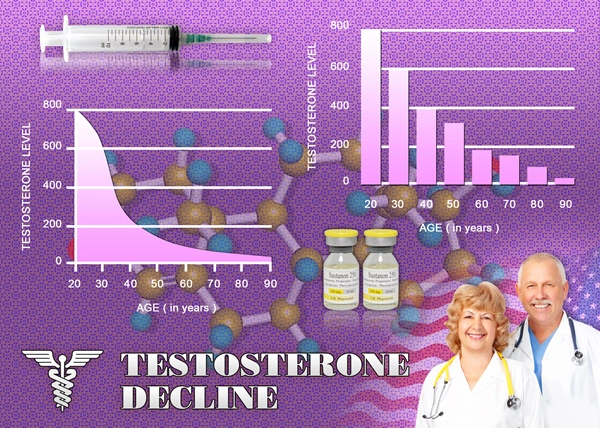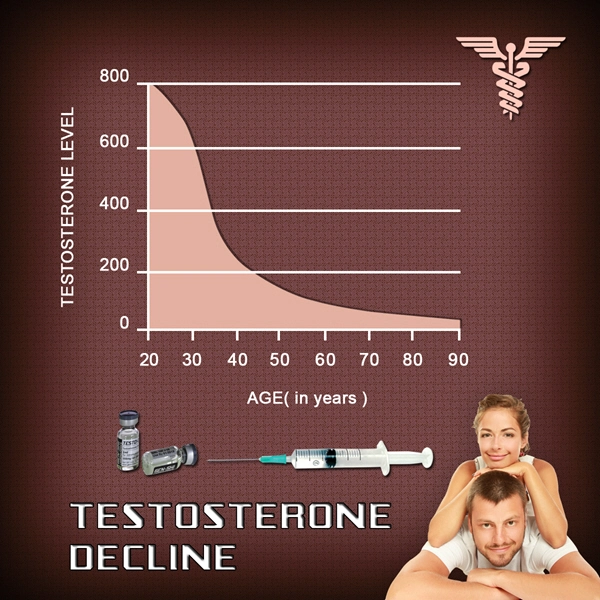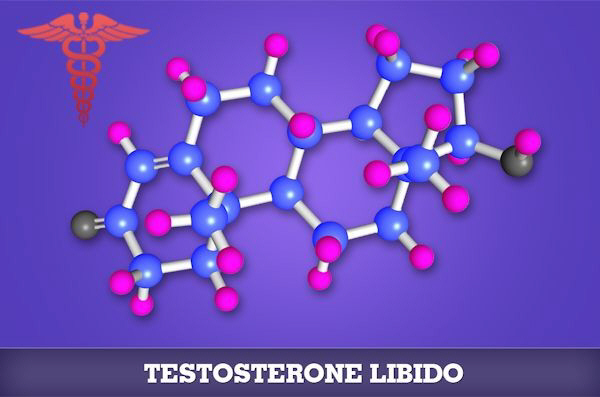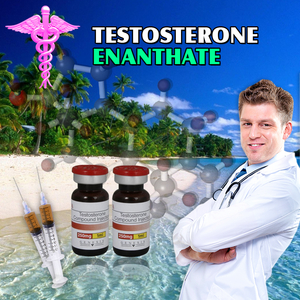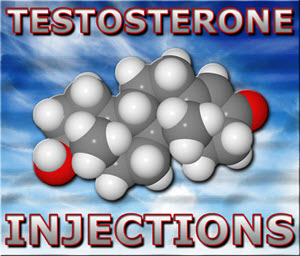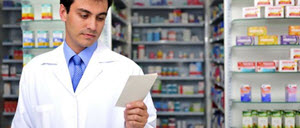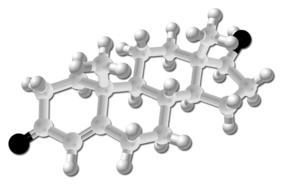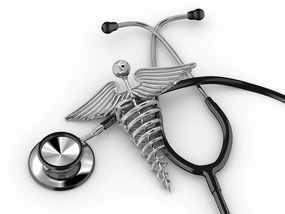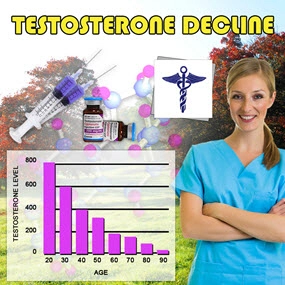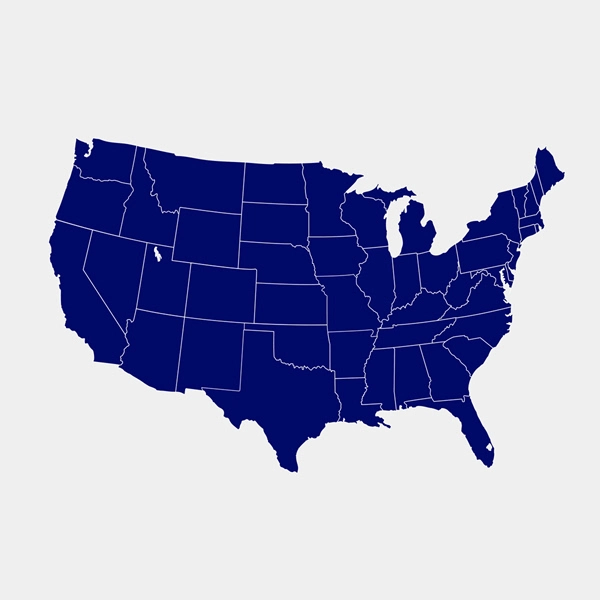Hypogonadism is a disorder where the testes in men and ovaries in women do not work correctly. It can be very distressing. Thanks to the discovery and development of gender-specific hormone treatments, men, and women with hypogonadism can lead a healthy life.
Hypogonadism is the clinical manifestation of the impaired function of the gonads, which in men are the testes and in women are the ovaries. Individual patients have hypogonadism from birth, while others may develop the condition later in their life.
The disease has different features in males and females, before and after the onset of puberty.
If onset is in pre-pubertal boys, signs, and symptoms of lack of testicular function, include a change of male hair distribution, including facial, chest, and axillary hair, poor development of skeletal muscles, and disturbance of bone growth resulting in abnormally long arms and legs.
Blood levels of the male hormone testosterone are low. Also observed are missing laryngeal enlargement, failure of vocal chord thickening, and alterations in body fat distribution.
When hypogonadism occurs in males after puberty, a low concentration of testosterone in the blood causes a lack of energy, weakness, lethargy and diminished sexual function, reduced bone mass, and often anemia.
In girls with hypogonadism before puberty, impaired ovarian function leads to failure of progression through puberty. The absence of periods (primary amenorrhoea) is the most common feature. Blood levels of estradiol are low. When hypogonadism occurs after puberty, irregular periods or lack of periods (secondary amenorrhea) is the usual concern.
The patients develop ovarian suppression which manifests as infertility, decreased libido, breast atrophy, and osteoporosis.
Testis and ovary function are part of a hormonal loop that consists of two components in the brain (the hypothalamic region and the pituitary gland) and the gonads themselves.
This hypothalamic-pituitary-gonadal axis acts as a waterfall. A hypothalamic generator releases luteinizing hormone-releasing hormone (LHRH). In response to these LHRH pulses, the pituitary secretes follicle-stimulating hormone (FSH) and luteinizing hormone (LH), which in turn stimulate testis and ovary.
The increased blood levels of the gonadal hormones (androgens in men and estrogens in women) lead to lowered FSH and LH secretion at the pituitary level, completing the negative feedback loop.
Hypogonadism may occur if this hypothalamic-pituitary-gonadal axis is interrupted at any level. Primary or hypogonadotropic hypogonadism results if the gonad does not produce the amount of sex hormone sufficient to suppress the secretion of LH and FSH at normal levels.
Hypogonadotropic hypogonadism may result from hypothalamic LHRH deficiency or from the inability of the pituitary to secrete LH and FSH. Most commonly, hypogonadotropic hypogonadism is observed after hypothalamic-pituitary injury from tumors, trauma, or radiation.
For male patients with primary hypogonadism, the most common cause is a genetic disorder known as Klinefelter syndrome, a chromosome abnormality that occurs in one case per approximately 1,000 live births.
Primary hypogonadism is more common in boys than in girls because the incidence of Klinefelter syndrome is higher than the frequency of the equivalent condition for girls, Turner syndrome. Hypogonadotropic hypogonadism in men occurs more rarely.
It is estimated, though, that less than ve percent of men with hypogonadotropic hypogonadism is diagnosed and are receiving hormone replacement therapy (HRT); around a fifth of men aged more than 50 years are believed to have androgen deficiency.
For women with primary hypogonadism, the most common cause is a genetic disorder known as Turner syndrome, a chromosome abnormality that occurs with an incidence of one case per approximately 5,000 live births. The prevalence of hypogonadotropic hypogonadism in females is equal to that of males.
No increase in mortality exists in patients with hypogonadism. The morbidity for men and women includes infertility, anemia, and an increased risk of osteoporosis. There does not appear to be a racial pattern.
The action of the gonadotropin-releasing hormone (GnRH) from the hypothalamus on the pituitary, and the subsequent action of LH and FSH from the pituitary on the testes to stimulate testosterone and sperm production
In men, low blood levels of testosterone should be increased. HRT may be given as a bi-weekly intramuscular injection, as a patch form, or as a gel preparation. In Europe, there exist some transdermal testosterone therapies, including gels containing one percent testosterone or in the form of dermal patches containing the active compound.
Several formulations are available, including a scrotal patch and several patches that may be applied at other sites. Patches are changed daily. Another treatment option is the prescription of tablets that dissolve in the mouth. Additionally, there are hormone implants.
These cylindrical pellets are inserted under the skin in the abdomen, buttock, or thigh. They are given once every three to six months. Oral preparations of testosterone are still available but rarely used.
In women, estrogen should be increased. To initiate pubertal development in girls, HRT can be given orally as conjugated estrogen or as a patch applied twice weekly.
The transdermal application allows a shallow starting dose of estrogen which is desired in young girls with bone ages below 12 years. Starting at higher doses may cause rapid closure of epiphyses and growth will be halted.
Women taking estrogen also need to take progesterone replacement unless they have undergone surgical removal of the uterus. Progesterone agents are added during the last 12 to 14 days of the menstrual cycle to transform the proliferative inner lining of the uterus (endometrium) into the secretory state.
Men and women with hypogonadism can lead a healthy life with HRT.
To restore fertility, preparations called human chorionic gonadotrophin (hCG) or human menopausal gonadotrophin (HMG) are given as intramuscular injections to treat men and women, respectively. In men, they act on the testicles and encourage the production of sperm and testosterone. While on gonadotrophin injections, there is no need to take testosterone or estrogen replacement therapy.
At the end of 2003, a new androgen replacement depot received its first approval in a European country for the treatment of hypogonadism in men. The slow-releasing depot formulation means it can be administered by just four injections a year, which is a vast improvement over existing treatments for testosterone deficiency, which require an average of 22 doses per year.
At the end of February 2004, it was found that the benefits of HRT in males suffering from hypogonadism are maintained for more than a year. Using a one percent once-daily testosterone gel, researchers reported significant improvements in sexual function, mood, lean body mass, and bone mineral density.
Research has shown a higher incidence of hypogonadotropic hypogonadism with concomitant conditions such as diabetes and AIDS. According to the latest results, some 30 percent of men suffering from type 2 diabetes are affected, because of the improper functioning of the hypothalamic-pituitary axis.
Research into new treatments for patients suffering from diseases such as diabetes and AIDS will, therefore, reduce the overall prevalence of hypogonadism.
Hypogonadism can be seen as an area in which the development of new medicines over the past twenty years has been very successful. With the improvements in outcome now achievable, the somewhat slower pace of new development can be taken as a sign of a job well done.
Contact Us Today For A Free Consultation

- BioSante Pharmaceuticals, Inc. to Present at BIO Investor Forum [Last Updated On: March 16th, 2025] [Originally Added On: October 9th, 2012]
- Secondary osteoporosis: More than what meets the eye! [Last Updated On: March 16th, 2025] [Originally Added On: October 10th, 2012]
- Trimel Provides Clinical and Operational Update [Last Updated On: March 16th, 2025] [Originally Added On: October 15th, 2012]
- Obese teen boys likelier to become impotent and infertile adults [Last Updated On: March 16th, 2025] [Originally Added On: October 17th, 2012]
- Obese teen boys have up to 50 percent less testosterone than lean boys [Last Updated On: March 16th, 2025] [Originally Added On: October 17th, 2012]
- Trimel Reports Physician Market Research Results for CompleoTRT(TM) [Last Updated On: March 16th, 2025] [Originally Added On: October 24th, 2012]
- Obese teen boys likelier to turn into 'impotent' men [Last Updated On: March 16th, 2025] [Originally Added On: October 24th, 2012]
- Trimel Pharmaceuticals Corporation to Report Third Quarter 2012 Results and Host a Conference Call to Update Investors [Last Updated On: March 16th, 2025] [Originally Added On: November 2nd, 2012]
- Peer Exchange: Establishing Bone Health Clinics - Video [Last Updated On: March 16th, 2025] [Originally Added On: November 2nd, 2012]
- What is hypogonadism and how does it affect fertility? - Video [Last Updated On: March 16th, 2025] [Originally Added On: November 2nd, 2012]
- Low Testosterone in Men or Man-O-Pause - Video [Last Updated On: March 16th, 2025] [Originally Added On: November 2nd, 2012]
- Propecia (Finasteride) -- Undisclosed Mechanisms, Potential Dangers [Last Updated On: March 16th, 2025] [Originally Added On: November 2nd, 2012]
- How to Get Ripped - Why You Shouldnt Use Anabolic Steroids - Video [Last Updated On: March 16th, 2025] [Originally Added On: November 2nd, 2012]
- Future Doc: Andropause Alternatives with Dr. James Biddle Part 1 - Video [Last Updated On: March 16th, 2025] [Originally Added On: November 2nd, 2012]
- Increase Testosterone Naturally With these Diet And Workout Secrets - Video [Last Updated On: March 16th, 2025] [Originally Added On: November 2nd, 2012]
- Sector Update: Healthcare - Video [Last Updated On: March 16th, 2025] [Originally Added On: November 2nd, 2012]
- Signs And Symptoms of Hypogonadism [Last Updated On: March 16th, 2025] [Originally Added On: November 2nd, 2012]
- Auxilium and Pfizer Will Conclude Agreement on XIAPEX® EU Collaboration [Last Updated On: March 16th, 2025] [Originally Added On: November 9th, 2012]
- Repros Therapeutics Inc.(R) Reports Third Quarter 2012 Financial Results [Last Updated On: March 16th, 2025] [Originally Added On: November 14th, 2012]
- hypogonadotropic hypogonadism - Video [Last Updated On: March 16th, 2025] [Originally Added On: November 22nd, 2012]
- Research and Markets: Male Hypogonadism - Pipeline Review, H2 2012 [Last Updated On: March 16th, 2025] [Originally Added On: November 30th, 2012]
- Auxilium Pharmaceuticals, Inc. to Present At The Oppenheimer 23rd Annual Growth Conference [Last Updated On: March 16th, 2025] [Originally Added On: December 8th, 2012]
- Low Testosterone (Hypogonadism) - Part 2 - Video [Last Updated On: March 16th, 2025] [Originally Added On: December 10th, 2012]
- The National Mesothelioma Law Firm of Baron and Budd Reports on a New Drug that Could Improve the Health of ... [Last Updated On: March 16th, 2025] [Originally Added On: December 19th, 2012]
- Hypogonadism ¦ Treatment and Symptoms - Video [Last Updated On: March 16th, 2025] [Originally Added On: March 7th, 2013]
- Research and Markets: Male Hypogonadism Global Clinical Trials Review, H1, 2013 [Last Updated On: March 16th, 2025] [Originally Added On: May 1st, 2013]
- Male hypogonadism Prof Ossama Fouda - Video [Last Updated On: March 16th, 2025] [Originally Added On: May 9th, 2013]
- Low Testosterone (Hypogonadism) - Part 3 - Video [Last Updated On: March 16th, 2025] [Originally Added On: July 2nd, 2013]
- Hypogonadism - what should you do - Video [Last Updated On: March 16th, 2025] [Originally Added On: July 2nd, 2013]
- NURS805 Hypogonadism Lecture - Video [Last Updated On: March 16th, 2025] [Originally Added On: August 16th, 2013]
- Hypogonadism: MedlinePlus Medical Encyclopedia [Last Updated On: March 16th, 2025] [Originally Added On: November 3rd, 2013]
- Hypogonadism - Diseases & Conditions - Medscape Reference [Last Updated On: March 16th, 2025] [Originally Added On: November 10th, 2013]
- Hypogonadotropic hypogonadism - Wikipedia, the free encyclopedia [Last Updated On: March 16th, 2025] [Originally Added On: November 10th, 2013]
- Low Testosterone (Low-T) Normal Levels, Hypogonadism, Symptoms ... [Last Updated On: March 16th, 2025] [Originally Added On: November 15th, 2013]
- HYPOGONADISM - University of Dundee [Last Updated On: March 16th, 2025] [Originally Added On: November 23rd, 2013]
- FAQ - Hypogonadism - MEDICAL DIAGNOSIS AND MEDICINAL PLANTS [Last Updated On: March 16th, 2025] [Originally Added On: November 23rd, 2013]
- Hypogonadism - About.com Men's Health [Last Updated On: March 16th, 2025] [Originally Added On: December 2nd, 2013]
- Exciting medical advances using HRT [Last Updated On: March 16th, 2025] [Originally Added On: December 12th, 2013]
- Male hypogonadism: Symptoms - MayoClinic.com [Last Updated On: March 16th, 2025] [Originally Added On: December 12th, 2013]
- Audio-Digest Foundation Announces the Release of Oncology Volume 04, Issue 16: Highlights from Future Directions ... [Last Updated On: March 16th, 2025] [Originally Added On: December 15th, 2013]
- Hypogonadism - Medscape Reference [Last Updated On: March 16th, 2025] [Originally Added On: December 21st, 2013]
- Hypogonadism [Last Updated On: March 16th, 2025] [Originally Added On: December 23rd, 2013]
- Hypogonadism - HealthCentral [Last Updated On: March 16th, 2025] [Originally Added On: December 24th, 2013]
- Hypogonadism | Medscape - Latest Medical News, Clinical Trials ... [Last Updated On: March 16th, 2025] [Originally Added On: December 30th, 2013]
- Hypogonadism - SharedJourney [Last Updated On: March 16th, 2025] [Originally Added On: January 23rd, 2014]
- Study Finds Potential Heart Risks from Testosterone Therapy [Last Updated On: March 16th, 2025] [Originally Added On: February 3rd, 2014]
- Endocrine Society calls for large-scale studies to evaluate testosterone therapy risks [Last Updated On: March 16th, 2025] [Originally Added On: February 8th, 2014]
- Testosterone Therapy Not Always Good for Older Men [Last Updated On: March 16th, 2025] [Originally Added On: February 11th, 2014]
- Hypogonadism: Types, Causes, & Symptoms Healthline [Last Updated On: March 16th, 2025] [Originally Added On: February 14th, 2014]
- Low Testosterone (Hypogonadism) in Men - Video [Last Updated On: March 16th, 2025] [Originally Added On: February 14th, 2014]
- Hypogonadism : Types, Causes, & Symptoms - Healthline [Last Updated On: March 16th, 2025] [Originally Added On: February 17th, 2014]
- Hypogonadism | Medscape - Latest Medical News, Clinical ... [Last Updated On: March 16th, 2025] [Originally Added On: February 23rd, 2014]
- Endo: FDA Oks AVEED Injection For Treatment Of Adult Men With Hypogonadism [Last Updated On: March 16th, 2025] [Originally Added On: March 6th, 2014]
- Unit Project 1 Hypogonadotropic hypogonadism - Video [Last Updated On: March 16th, 2025] [Originally Added On: March 8th, 2014]
- Update on Endo's Product Portfolio - Analyst Blog [Last Updated On: March 16th, 2025] [Originally Added On: March 11th, 2014]
- Male hypogonadism Symptoms - Diseases and Conditions ... [Last Updated On: March 16th, 2025] [Originally Added On: April 2nd, 2014]
- Hypogonadism: Types, Causes, & Symptoms - Medical ... [Last Updated On: March 16th, 2025] [Originally Added On: April 6th, 2014]
- VLog #127 Frances Explains Hypogonadism. - Video [Last Updated On: March 16th, 2025] [Originally Added On: April 7th, 2014]
- Repros Completes Enrollment for Androxal Study - Analyst Blog [Last Updated On: March 16th, 2025] [Originally Added On: April 16th, 2014]
- Prevalence, Diagnosis and Treatment of Hypogonadism in ... [Last Updated On: March 16th, 2025] [Originally Added On: April 30th, 2014]
- Repros Therapeutics Q2 Loss a Penny Wider than Expected - Analyst Blog [Last Updated On: March 16th, 2025] [Originally Added On: August 12th, 2014]
- Repros Reports Encouraging Late-Stage Data on Androxal - Analyst Blog [Last Updated On: March 16th, 2025] [Originally Added On: August 28th, 2014]
- Repros Therapeutics Analyst Brief Report; Androxal(R) Achieves Superiority in Top Line Analysis by Small Cap Street ... [Last Updated On: March 16th, 2025] [Originally Added On: September 30th, 2014]
- The Wall Street Journal: Repros Therapeutics shares drop on drug application setback [Last Updated On: March 16th, 2025] [Originally Added On: October 18th, 2014]
- Apricus expands development pipeline with in-licensing of US rights for fispemifene [Last Updated On: March 16th, 2025] [Originally Added On: October 21st, 2014]
- Apricus expands development pipeline with the in-licensing of US rights for fispemifene, a phase 2b ready asset, from ... [Last Updated On: March 16th, 2025] [Originally Added On: October 21st, 2014]
- Hypogonadism No Moustache! No Beard!! [Last Updated On: March 16th, 2025] [Originally Added On: October 28th, 2014]
- Male Hypogonadism: Male Reproductive Endocrinology: Merck ... [Last Updated On: March 16th, 2025] [Originally Added On: October 28th, 2014]
- Hypogonadism Wikipedia [Last Updated On: March 16th, 2025] [Originally Added On: October 28th, 2014]
- Urology Care Foundation - Urology A-Z - Low Testosterone [Last Updated On: March 16th, 2025] [Originally Added On: November 3rd, 2014]
- Will Repros (RPRX) Miss Estimates This Earnings Season? - Analyst Blog [Last Updated On: March 16th, 2025] [Originally Added On: November 5th, 2014]
- Hypogonadism in men living with HIV - Video [Last Updated On: March 16th, 2025] [Originally Added On: November 7th, 2014]
- Male Hypogonadism Therapeutic Pipeline Industry Review, H2 2014 - Video [Last Updated On: March 16th, 2025] [Originally Added On: November 7th, 2014]
- Testosterone Deficiency (Hypogonadism) Overview ... [Last Updated On: March 16th, 2025] [Originally Added On: November 23rd, 2014]
- Endo to Acquire Rights to Testosterone Nasal Gel Natesto - Analyst Blog [Last Updated On: March 16th, 2025] [Originally Added On: November 26th, 2014]
- Male hypogonadism pathophysiology - Video [Last Updated On: March 16th, 2025] [Originally Added On: January 14th, 2015]
- Auxilium Announces Results from Special Meeting of Stockholders [Last Updated On: March 16th, 2025] [Originally Added On: January 28th, 2015]
- What is Hypogonadism - Symptoms and Treatment | Hormone ... [Last Updated On: March 16th, 2025] [Originally Added On: January 30th, 2015]
- Male Hypogonadism 1/28/15 - Video [Last Updated On: March 16th, 2025] [Originally Added On: January 31st, 2015]
- Male hypogonadism: symptoms, cause, treatment, risk ... [Last Updated On: March 16th, 2025] [Originally Added On: February 18th, 2015]
Word Count: 1175

